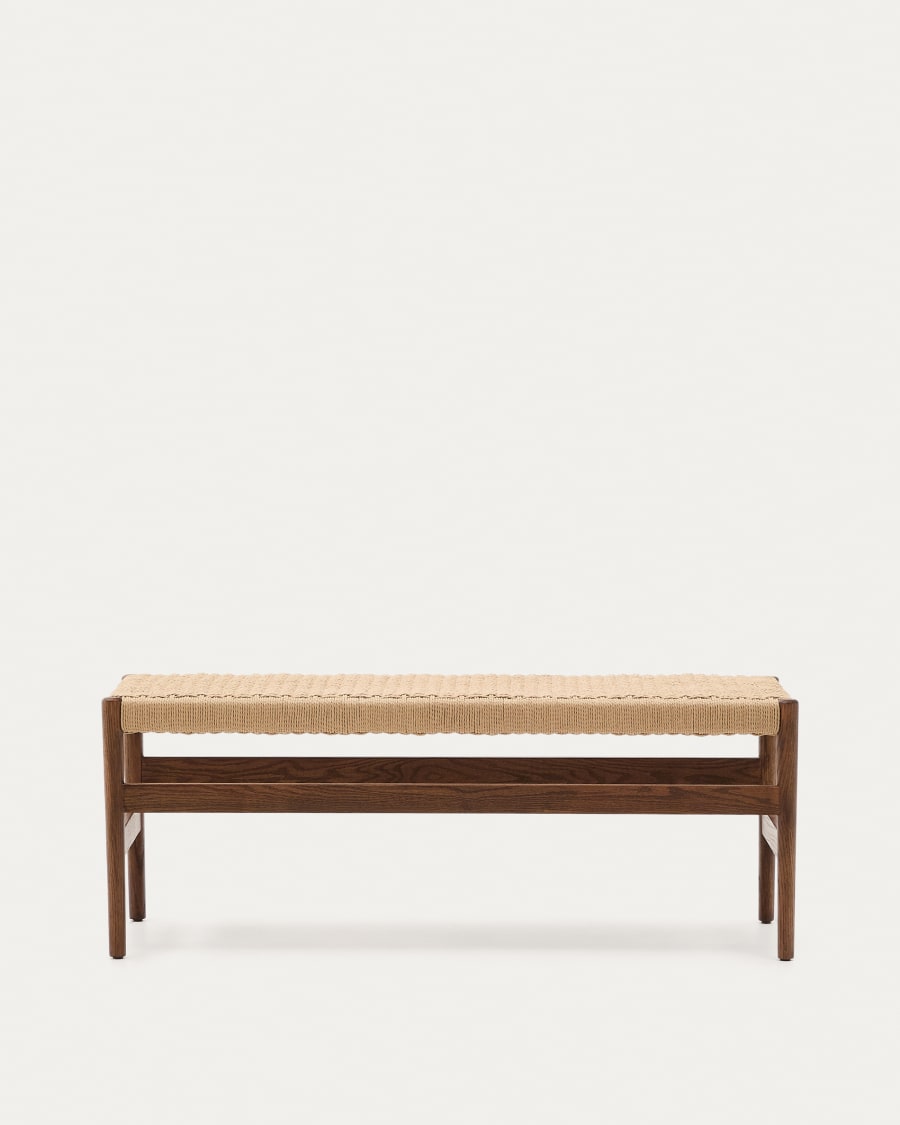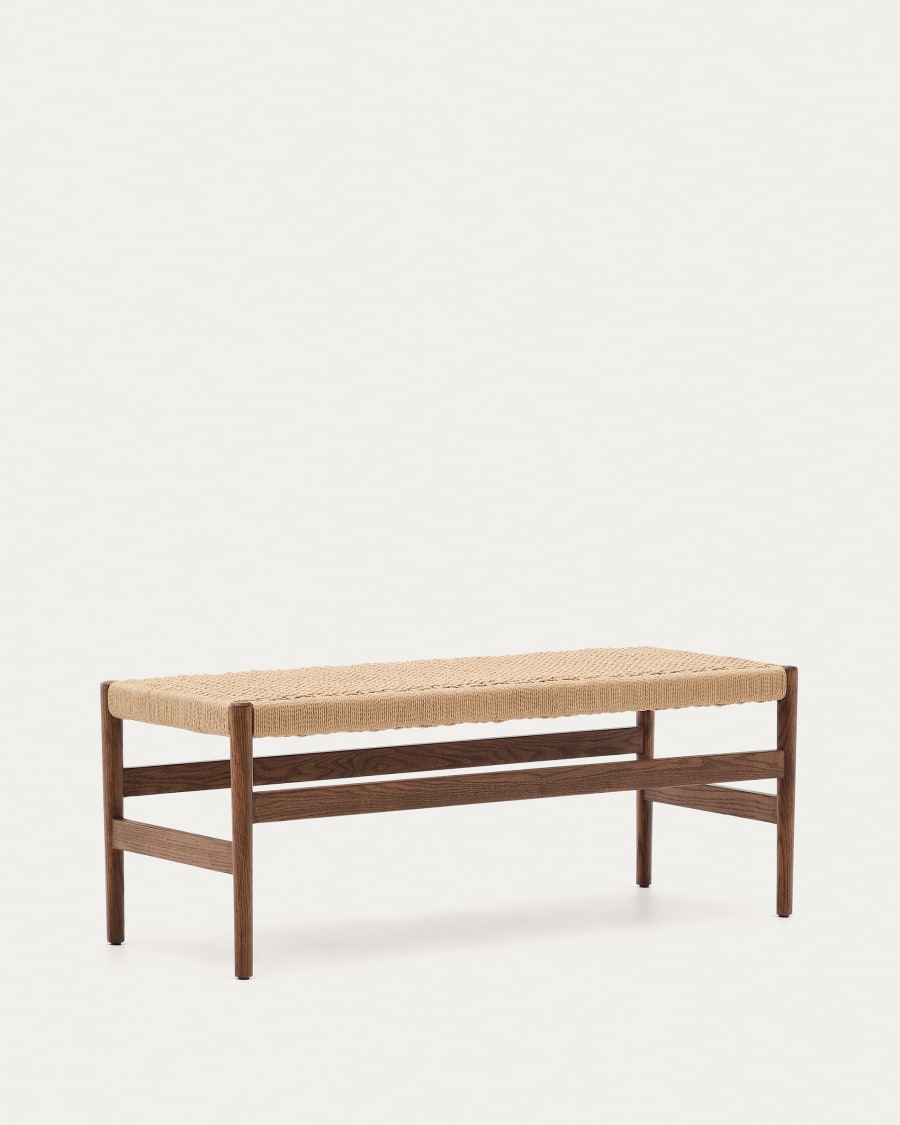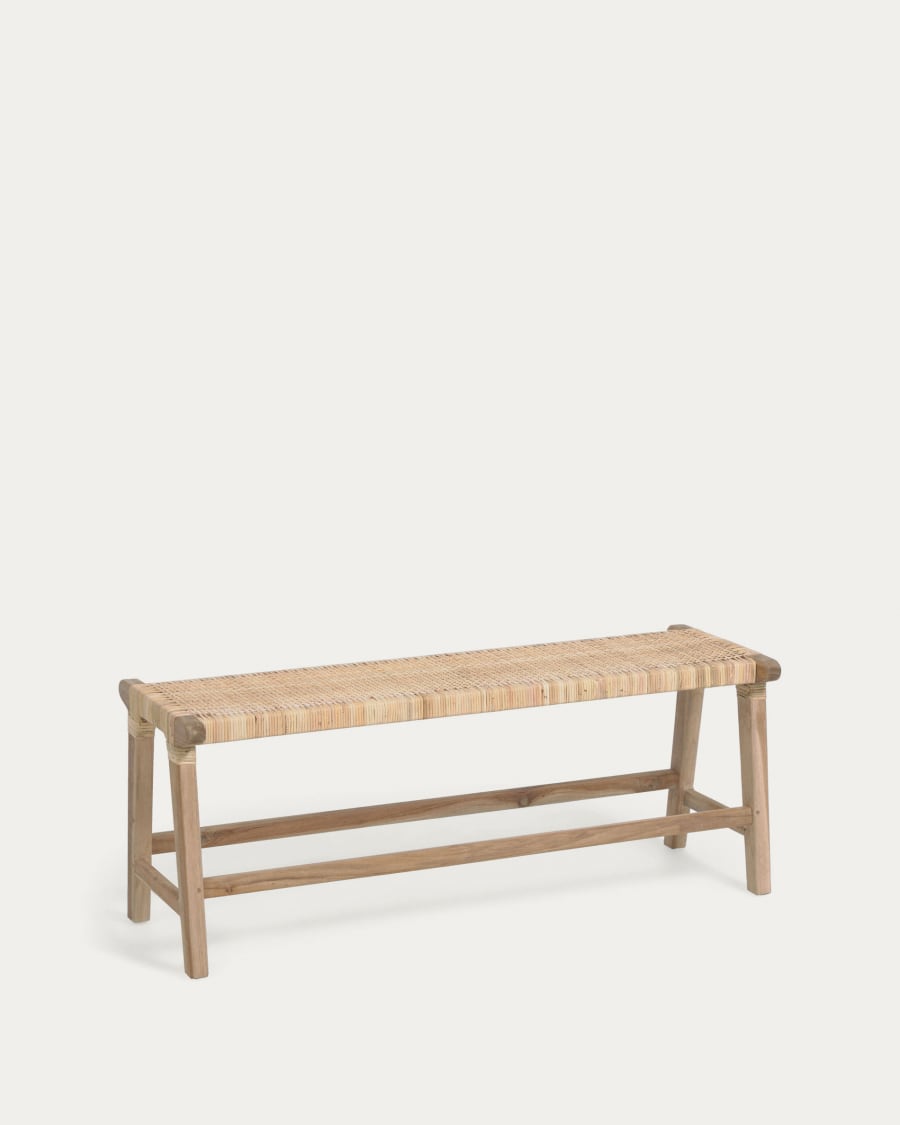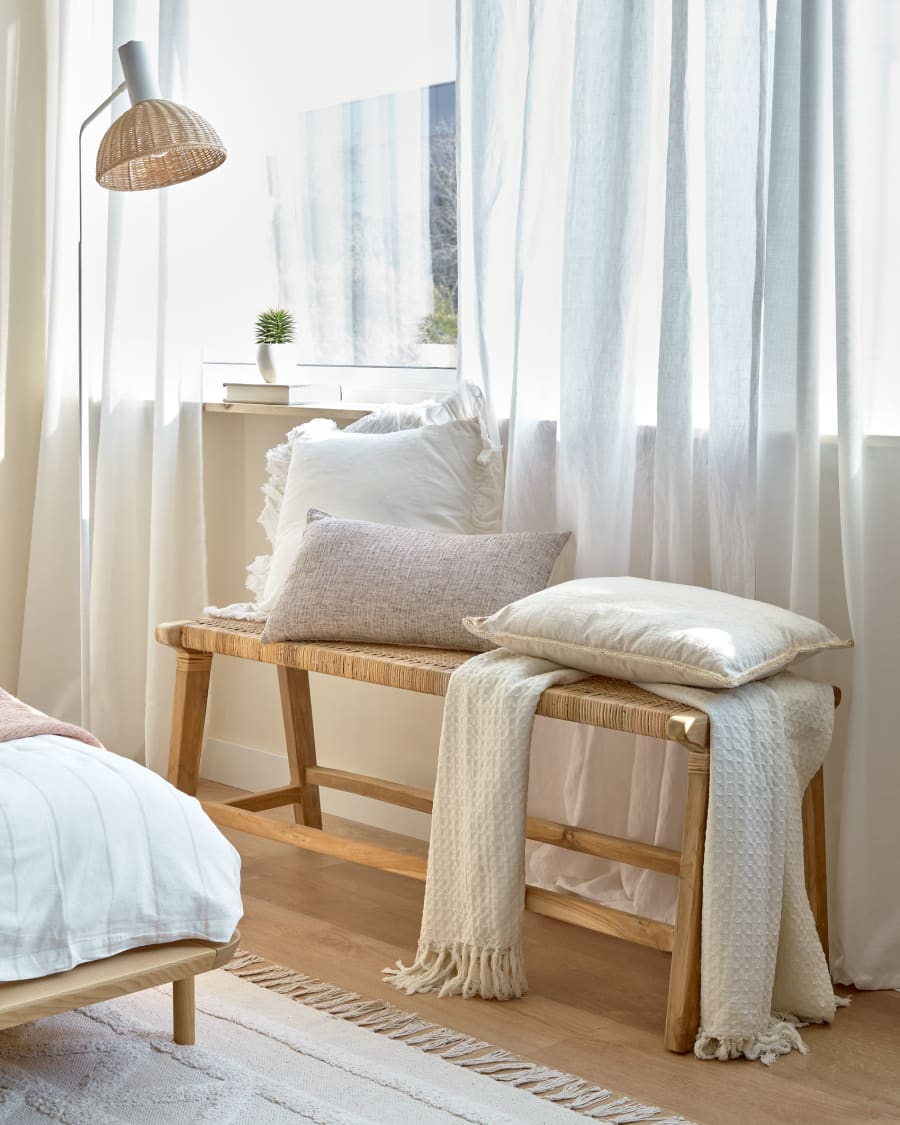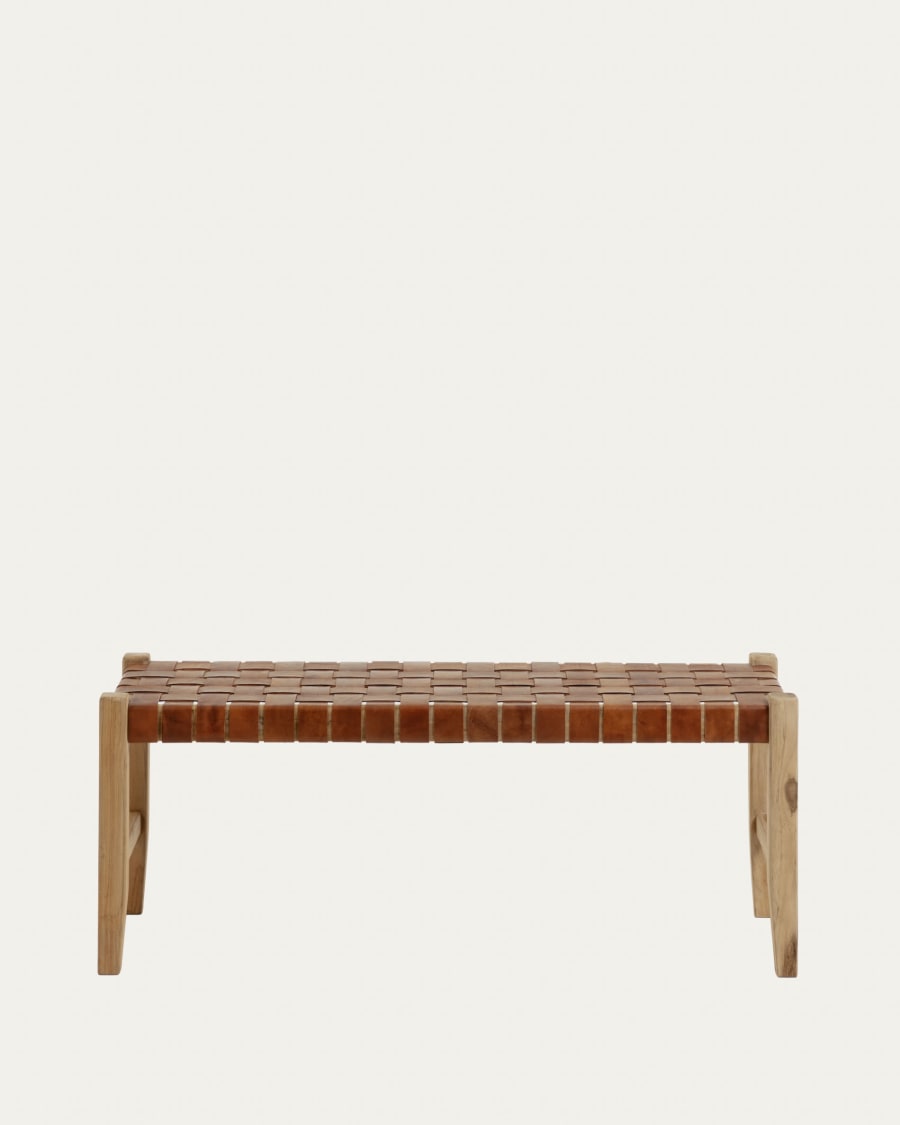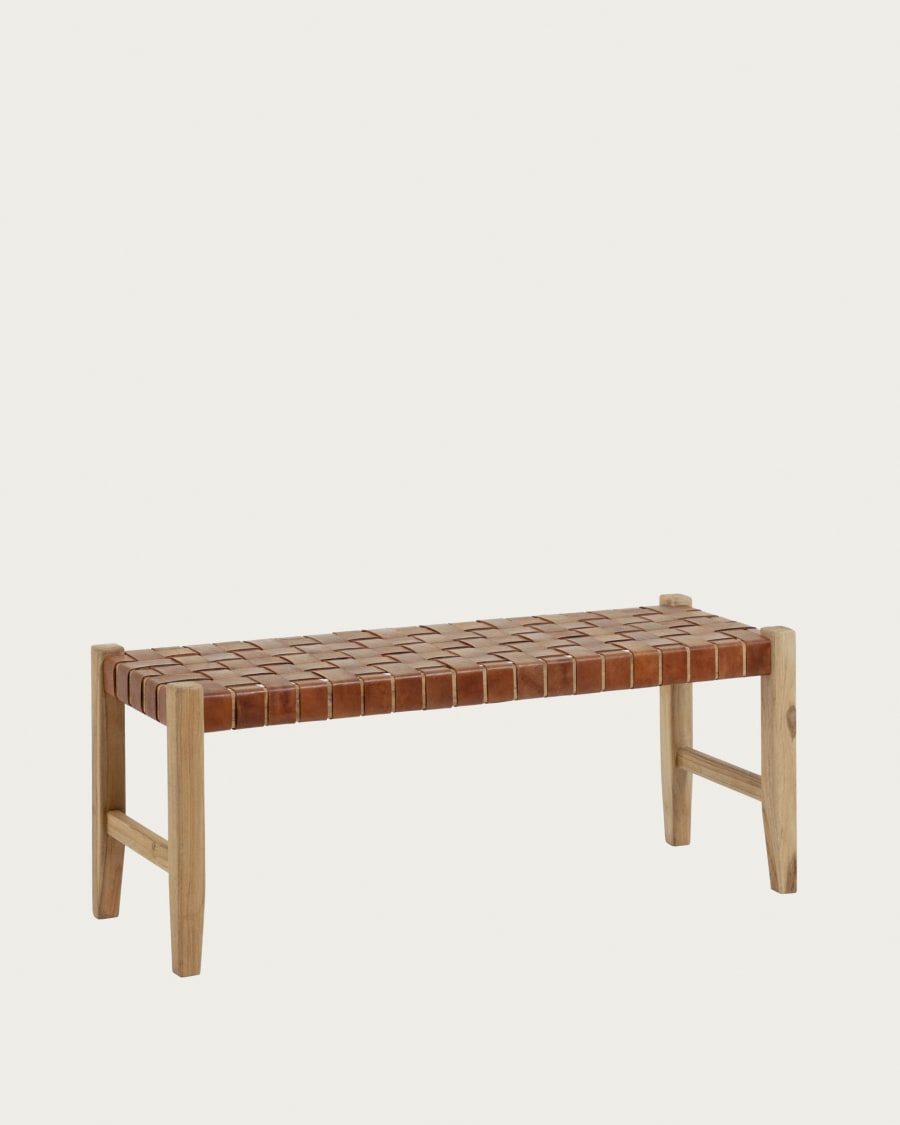- Home
- Japandi Benches
Japandi Benches
Japandi Benches: Scandinavian-Japanese Fusion Furniture
Imagine a bench that feels both serene and purposeful. Japandi benches blend the Japandi aesthetic, where Japanese minimalism meets Scandinavian hygge. This design philosophy prioritizes clean lines and neutral tones while ensuring every curve serves a purpose.
The Japanese influence introduces wabi-sabi – beauty in imperfection – through subtle textures in wood grain. Scandinavian design adds practicality, like benches with hooks for coats or hidden storage compartments. The result? A piece that feels effortlessly useful yet calming.
Why does this matter now? Modern lifestyles crave balance. Japandi benches answer by reducing visual clutter (Japanese minimalism) while solving everyday problems (Scandinavian functionality). A 4.9/5 rated bench with 47 reviews proves consumers recognize this harmony.
Material Choices: Embracing Natural Elements
Touch tells a story with Japandi benches. Natural materials like solid oak, bamboo, and stone are not just aesthetic choices – they’re statements. These elements age gracefully, developing unique character over time through subtle scratches and patina.
Consider the 110cm 110cm bamboo bench with under-seat storage. Bamboo grows 30x faster than hardwood, making it both eco-friendly and durable. The 140cm solid wood bench showcases visible wood grain, celebrating nature’s imperfections rather than hiding them.
- Bamboo – 30% faster growth than hardwood
- Solid oak – 25-year lifespan with proper care
- Textured stone – develops unique patina
Enhancing Spaces: Indoor And Outdoor Applications
Watch how Japandi benches transform environments. Indoors, a 110cm bench with rounded edges softens a minimalist entrance hall. Outdoors, weather-treated teak withstands rain while maintaining its neutral tones.
In small spaces, 35cm deep benches maximize square footage. For larger areas, 140cm long pieces become statement furniture. The key? Neutral bases with muted accents – think sage green cushions on oak.
Why limit yourself to one room? These benches transition seamlessly from entryway seating with coat hooks to garden accents beside stone pathways. Their versatility makes them investments, not just decor.
Practical Considerations: Dimensions And Integration
Measure twice, buy once. The ideal bench height? 43-45cm – matching standard table heights for dining use. Need entryway storage? Look for 50cm depth to accommodate boots and bags.
Integration secrets:
- Combine 110cm benches with wall hooks for 40% better organization
- Pair 120cm outdoor pieces with rounded stone planters for continuity
- Use 35cm deep models in narrow hallways without sacrificing flow
A 4.9/5 rated bench proves dimensions matter – its 130cm seat length accommodates three people comfortably while maintaining visual lightness.
What is a Japandi bench?
Japandi benches merge Japanese minimalism and Scandinavian functionality into a design philosophy centered on simplicity, purpose, and natural elegance. This hybrid style combines Wabi-Sabi, which celebrates imperfection and organic textures, with Hygge, prioritizing comfort and practicality. The result is furniture that balances serene aesthetics with everyday usability, reflecting a lifestyle that values intentional, clutter-free living.
These benches prioritize clean lines and uncluttered forms, often featuring geometric shapes and tapered edges. Ornamentation is avoided; every detail serves a functional role. For example, discreet storage compartments or subtle hooks blend Scandinavian practicality with Japanese restraint, ensuring the bench remains a quiet yet purposeful presence in spaces like entryways, living rooms, or patios. The design avoids bulk, often using low-profile silhouettes that create visual lightness while maximizing usability.
Neutral tones dominate Japandi color palettes, reflecting the natural world. Light woods like bleached oak or pale linen cushions create a calming base, while muted accents—sage, charcoal, or terracotta—add subtle contrast. Organic textures, such as rough-hewn wood grains or linen upholstery, introduce depth without disrupting the serene ambiance. This versatility allows the bench to harmonize with diverse settings, from modern to rustic interiors, acting as a bridge between contrasting design elements while maintaining cohesion.
Durability and sustainability define Japandi materials. Natural elements like reclaimed wood, bamboo, and unpolished stone are favored for resilience and eco-conscious appeal. A bench might use weathered oak salvaged from old structures or bamboo for lightweight, durable frames. Hand-finished details—uneven wood carvings or natural stone fissures—highlight craftsmanship, celebrating imperfection. Prioritizing quality over trends, these benches become timeless heirlooms that align with mindful, low-waste living while being suitable for both indoor and outdoor use, thanks to weather-resistant finishes and robust material choices.
How To Choose Your Japandi Bench?
Consider The Size And Proportion For Your Space
Measuring available space is critical for a Japandi bench. Aim to leave 60–90 cm (24–36 inches) of clearance around the bench to maintain the uncluttered aesthetic. Overloading a small area disrupts the minimalist harmony these designs prioritize. Balance visual weight with functional space—Japandi benches should feel intentional, not obstructive.
For tight entryways, opt for compact benches like the 100 cm L x 40 cm H x 40 cm P model. This size offers seating for two without overwhelming narrow corridors. Prioritize depth under 40 cm (16 inches) to preserve walkway flow. For multi-use areas, a 45 cm (18-inch) height works for seating or placing small items. Consider benches with tapered legs to enhance the illusion of space while maintaining structural stability.
Evaluate Materials And Textures
Natural elements like wood and stone anchor the Japandi style, blending Scandinavian warmth with Japanese organic elegance. Light woods such as oak and ash evoke Nordic simplicity, while darker tones like charred bamboo or walnut nod to Japanese tradecraft. Material choice should reflect room brightness and existing decor. For durability, solid oak or ash withstand wear while preserving their grain over time. Avoid synthetic alternatives; Japandi prioritizes authenticity.
- Solid wood (Oak, Ash, Walnut): For durability and a timeless, natural look. Opt for matte finishes to emphasize texture over gloss.
- Bamboo: A sustainable and lightweight option, often used in Japanese design. Ideal for humid spaces like entryways due to its mildew resistance.
- Rattan or Woven details: To add organic texture and visual interest. Use sparingly—woven backs or legs introduce subtle dynamism without clutter.
- Upholstered tops (Linen, Bouclé): For added comfort, blending Scandinavian hygge with minimalist forms. Neutral tones like oatmeal or gray maintain neutrality.
Define The Bench’s Primary Function
Japandi benches excel in dual-purpose design. Decide if yours serves as a decorative accent, extra seating, or a storage hub. The style’s genius lies in hiding practicality behind sleek lines—like integrating shallow shelves beneath for shoes in entryways. For small spaces, prioritize vertical storage: hooks or wall-mounted shelves above the bench keep floors clear. Pair with baskets or bins for organized chaos-free zones.
Look for discreet storage options like lift-top seats or slim drawers. The "bench with hooks entryway" merges form and function: hooks for coats or bags keep clutter out of sight while maintaining the clean silhouette. A 150 cm (59-inch) bench with 32 cm (12.6-inch) depth balances seating and storage in narrow spaces without blocking pathways. For families, choose benches with hidden compartments disguised as floor panels or beneath cushions—perfect for stashing essentials without visual noise.
Where To Place Your Japandi Bench For Maximum Impact
Japandi benches blend Japanese minimalism with Scandinavian practicality, creating versatile pieces that adapt. Their clean lines, neutral tones, and natural materials make them ideal for balancing aesthetics and utility. Whether in compact corners or open areas, strategic placement enhances both function and visual harmony.
In The Entryway Or Foyer
The entryway is where a Japandi bench shines as both a functional and decorative anchor. Its minimalist frame offers a practical spot to sit while removing shoes, while its natural wood or stone elements align with minimalist entrance hall ideals. A bench here sets a serene tone, pairing with neutral walls and sparse decor to avoid clutter. For added utility, opt for designs with integrated hooks or storage, merging form and purpose seamlessly.
In The Dining Room Or Kitchen
In dining spaces, a Japandi bench replaces traditional chairs to create a cohesive, modern look. Placed along one side of a table, it fosters intimacy and saves space—a boon for smaller rooms. The bench’s neutral palette complements wooden tables or sleek Scandinavian chairs, while its durability supports daily use. It’s also a subtle nod to Scandinavian hygge, inviting relaxed gatherings without sacrificing the Japanese principle of uncluttered simplicity.
At The Foot Of The Bed
A Japandi bench at the foot of the bed adds quiet elegance to bedrooms. Beyond its visual appeal, it serves as a surface for folded linens, decorative cushions, or evening attire. Choose a low-profile design in light wood to maintain airflow in the room. This placement subtly anchors the bed while reflecting the Japandi ethos of mindful living—where every piece earns its place through beauty and utility.
- Entryway: Creates a welcoming and practical landing strip.
- Dining Room: A space-saving and stylish alternative to chairs.
- Bedroom: Adds a finishing touch and a convenient surface at the foot of the bed.
- Living Room: Can act as a minimalist coffee table or extra seating.
- Outdoor Spaces: If made from weather-resistant wood, it connects the indoor and outdoor aesthetic.
For outdoor use, select benches crafted from teak or cedar. These materials withstand the elements while preserving Japandi’s organic charm. Positioning one near a patio or garden blurs boundaries between inside and out, echoing the style’s focus on nature and intentionality.
Mastering The Japandi Look With Your Bench
The Japandi aesthetic thrives on simplicity, blending Japanese minimalism with Scandinavian functionality. A well-styled bench becomes more than furniture—it transforms into a statement of intentional living. Why do these designs captivate homeowners worldwide? The answer lies in their ability to balance form and function while honoring natural materials.
| Style | Key Material | Best For | Design Highlight |
|---|---|---|---|
| Minimalist Solid Wood Bench | Oak, Ash, Walnut | Entryways, Dining Rooms | Pure clean lines, focus on wood grain |
| Bench With Woven Seat | Wood and Rattan/Paper Cord | Bedrooms, Living Areas | Adding texture and organic feel |
| Storage Bench | Wood with integrated drawers/shelf | Small entryways, hallways | Functional minimalism, hides clutter |
| Upholstered Bench | Wood and Linen/Bouclé fabric | Bedrooms, cozy corners | Combining comfort (Hygge) with simple form |
Beyond material choices, styling defines the Japandi bench’s impact. How can you maximize its visual potential without overwhelming the space? Consider these strategies:
- Less is more: Place a single ceramic vase or a small stack of books. Why add clutter when one curated item makes a stronger statement?
- Add soft texture: A single, neutral-toned cushion introduces warmth. Studies show subtle textures increase perceived comfort by 27%.
- Let it breathe: Leave the bench empty to appreciate its form. Empty space creates visual rest—a core wabi-sabi principle.
- Natural elements: Pair with a nearby plant. Research indicates indoor plants improve air quality while reinforcing the nature connection central to both design philosophies.
Integrating a Japandi bench elevates spaces by merging opposites: durability meets delicacy, storage meets openness, tradition meets modernity. These designs don’t just occupy space—they enhance it. Will your home embrace this timeless synergy? The choice could redefine your space’s atmosphere entirely.
FAQ
What Makes Japandi Benches Unique in Design Philosophy?
Japandi benches embody a harmonious blend of Japanese minimalism and Scandinavian functionality. Rooted in the Wabi-Sabi appreciation for natural imperfections and the Hygge concept of cozy comfort, these benches prioritize clean lines, uncluttered forms, and purposeful design. They balance the serene simplicity of Eastern aesthetics with the practical warmth of Nordic living, creating timeless pieces that feel both intentional and inviting.
Which Natural Materials Define Authentic Japandi Benches?
Authentic Japandi benches showcase natural materials like light oak, dark walnut, and carbonized bamboo to reflect both Scandinavian and Japanese influences. Textures matter—think raw wood grains, woven rattan seats, or linen-upholstered cushions that add tactile warmth. Durable, sustainable choices like solid wood or bamboo ensure longevity, while muted tones (beiges, soft grays, natural wood finishes) maintain tranquil, cohesive spaces that align with minimalist principles.
How Can Japandi Benches Enhance Small Entryways?
For small entryway ideas Japandi, opt for narrow benches with slim profiles to avoid visual overload. Storage-integrated designs—like hidden drawers or low shelves for shoes—maintain minimalism while maximizing utility. Pair with a wall-mounted coat rack or a woven basket for organization. Prioritize scale: a bench that’s proportionate to your space preserves openness, embodying the Japandi ethos of functional simplicity without sacrificing style.
What Are Styling Tips for a Minimalist Japandi Bench?
Styling a Japandi bench follows the "less is more" mantra. Add subtle texture with a single linen cushion in a neutral tone, or display a handcrafted ceramic vase with dried grasses for organic contrast. Let the bench’s natural materials shine—avoid overcrowding. A potted plant nearby connects to nature, while leaving the bench bare occasionally highlights its sculptural form. The goal is to enhance, not overwhelm, its understated elegance.
How Do Japandi Benches Combine Aesthetics and Practicality?
Japandi benches excel at merging form and function. A bench with hooks entryway offers seating and coat storage in one sleek unit, while lift-top designs hide shoe compartments. In dining rooms, they provide flexible seating that complements tables without visual noise. Their low, grounded profiles create calm, and artisanal touches—like hand-carved wood details—add character. This duality ensures every piece serves a purpose while elevating the room’s aesthetic harmony.
